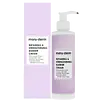What's inside
What's inside
 Key Ingredients
Key Ingredients

 Benefits
Benefits

 Concerns
Concerns

No concerns
 Ingredients Side-by-side
Ingredients Side-by-side

Snail Secretion Filtrate
Skin ConditioningGlycerin
HumectantWater
Skin ConditioningSodium Hyaluronate
HumectantAcetyl Hexapeptide-8
HumectantAllantoin
Skin ConditioningPCA
HumectantGlycine
BufferingAlanine
MaskingSerine
MaskingValine
MaskingProline
Skin ConditioningSodium Polyacrylate
AbsorbentInulin Lauryl Carbamate
Emulsion StabilisingHydroxyethylcellulose
Emulsion StabilisingBetaine
HumectantXanthan Gum
EmulsifyingPanthenol
Skin ConditioningSodium PCA
HumectantSodium Lactate
BufferingArginine
MaskingAspartic Acid
MaskingThreonine
Isoleucine
Skin ConditioningHistidine
HumectantPhenylalanine
MaskingSodium Benzoate
MaskingCaprylyl Glycol
EmollientPhenethyl Alcohol
MaskingPotassium Sorbate
PreservativeSnail Secretion Filtrate, Glycerin, Water, Sodium Hyaluronate, Acetyl Hexapeptide-8, Allantoin, PCA, Glycine, Alanine, Serine, Valine, Proline, Sodium Polyacrylate, Inulin Lauryl Carbamate, Hydroxyethylcellulose, Betaine, Xanthan Gum, Panthenol, Sodium PCA, Sodium Lactate, Arginine, Aspartic Acid, Threonine, Isoleucine, Histidine, Phenylalanine, Sodium Benzoate, Caprylyl Glycol, Phenethyl Alcohol, Potassium Sorbate
Water
Skin ConditioningPanthenol
Skin ConditioningGlycerin
HumectantNiacinamide
SmoothingButyrospermum Parkii Butter
Skin ConditioningCeramide NP
Skin ConditioningSodium Hyaluronate
HumectantBifida Ferment Lysate
Skin ConditioningAllantoin
Skin ConditioningSqualane
EmollientSodium PCA
HumectantLecithin
EmollientInulin Lauryl Carbamate
Emulsion StabilisingPotassium Cetyl Phosphate
EmulsifyingButylene Glycol
HumectantCaprylyl Glycol
EmollientEthylhexylglycerin
Skin ConditioningCaprylic/Capric Triglyceride
MaskingCyclopentasiloxane
EmollientDimethiconol
EmollientSodium Hydroxide
BufferingPhenoxyethanol
PreservativeXanthan Gum
EmulsifyingTetrasodium EDTA
Water, Panthenol, Glycerin, Niacinamide, Butyrospermum Parkii Butter, Ceramide NP, Sodium Hyaluronate, Bifida Ferment Lysate, Allantoin, Squalane, Sodium PCA, Lecithin, Inulin Lauryl Carbamate, Potassium Cetyl Phosphate, Butylene Glycol, Caprylyl Glycol, Ethylhexylglycerin, Caprylic/Capric Triglyceride, Cyclopentasiloxane, Dimethiconol, Sodium Hydroxide, Phenoxyethanol, Xanthan Gum, Tetrasodium EDTA
 Reviews
Reviews

Ingredients Explained
These ingredients are found in both products.
Ingredients higher up in an ingredient list are typically present in a larger amount.
Allantoin is a soothing ingredient known for its protective and moisturizingg properties. Because of this, it is often added to products with strong active ingredients.
Studies show higher concentrations of this ingredient can promote wound healing.
Though it can be derived from the comfrey plant, allantoin is produced synthetically for cosmetic products to ensure purity.
Learn more about AllantoinCaprylyl Glycol is a humectant and emollient, meaning it attracts and preserves moisture.
It is a common ingredient in many products, especially those designed to hydrate skin. The primary benefits are retaining moisture, skin softening, and promoting a healthy skin barrier.
Though Caprylyl Glycol is an alcohol derived from fatty acids, it is not the kind that can dry out skin.
This ingredient is also used as a preservative to extend the life of products. It has slight antimicrobial properties.
Learn more about Caprylyl GlycolGlycerin is already naturally found in your skin. It helps moisturize and protect your skin.
A study from 2016 found glycerin to be more effective as a humectant than AHAs and hyaluronic acid.
As a humectant, it helps the skin stay hydrated by pulling moisture to your skin. The low molecular weight of glycerin allows it to pull moisture into the deeper layers of your skin.
Hydrated skin improves your skin barrier; Your skin barrier helps protect against irritants and bacteria.
Glycerin has also been found to have antimicrobial and antiviral properties. Due to these properties, glycerin is often used in wound and burn treatments.
In cosmetics, glycerin is usually derived from plants such as soybean or palm. However, it can also be sourced from animals, such as tallow or animal fat.
This ingredient is organic, colorless, odorless, and non-toxic.
Glycerin is the name for this ingredient in American English. British English uses Glycerol/Glycerine.
Learn more about GlycerinWe don't have a description for Inulin Lauryl Carbamate yet.
Panthenol is a common ingredient that helps hydrate and soothe the skin. It is found naturally in our skin and hair.
There are two forms of panthenol: D and L.
D-panthenol is also known as dexpanthenol. Most cosmetics use dexpanthenol or a mixture of D and L-panthenol.
Panthenol is famous due to its ability to go deeper into the skin's layers. Using this ingredient has numerous pros (and no cons):
Like hyaluronic acid, panthenol is a humectant. Humectants are able to bind and hold large amounts of water to keep skin hydrated.
This ingredient works well for wound healing. It works by increasing tissue in the wound and helps close open wounds.
Once oxidized, panthenol converts to pantothenic acid. Panthothenic acid is found in all living cells.
This ingredient is also referred to as pro-vitamin B5.
Learn more about PanthenolSodium Hyaluronate is hyaluronic acid's salt form. It is commonly derived from the sodium salt of hyaluronic acid.
Like hyaluronic acid, it is great at holding water and acts as a humectant. This makes it a great skin hydrating ingredient.
Sodium Hyaluronate is naturally occurring in our bodies and is mostly found in eye fluid and joints.
These are some other common types of Hyaluronic Acid:
Learn more about Sodium HyaluronateSodium PCA is the sodium salt of pyroglutamic acid. It is naturally occurring in our skin's natural moisturizing factors where it works to maintain hydration.
The PCA stands for pyrrolidone carboxylic acid, a natural amino acid derivative.
This ingredient has skin conditioning, anti-inflammatory, and humectant properties. Humectants help hydrate your skin by drawing moisture from the air. This helps keep your skin moisturized.
Learn more about Sodium PCAWater. It's the most common cosmetic ingredient of all. You'll usually see it at the top of ingredient lists, meaning that it makes up the largest part of the product.
So why is it so popular? Water most often acts as a solvent - this means that it helps dissolve other ingredients into the formulation.
You'll also recognize water as that liquid we all need to stay alive. If you see this, drink a glass of water. Stay hydrated!
Learn more about WaterXanthan gum is used as a stabilizer and thickener within cosmetic products. It helps give products a sticky, thick feeling - preventing them from being too runny.
On the technical side of things, xanthan gum is a polysaccharide - a combination consisting of multiple sugar molecules bonded together.
Xanthan gum is a pretty common and great ingredient. It is a natural, non-toxic, non-irritating ingredient that is also commonly used in food products.
Learn more about Xanthan Gum